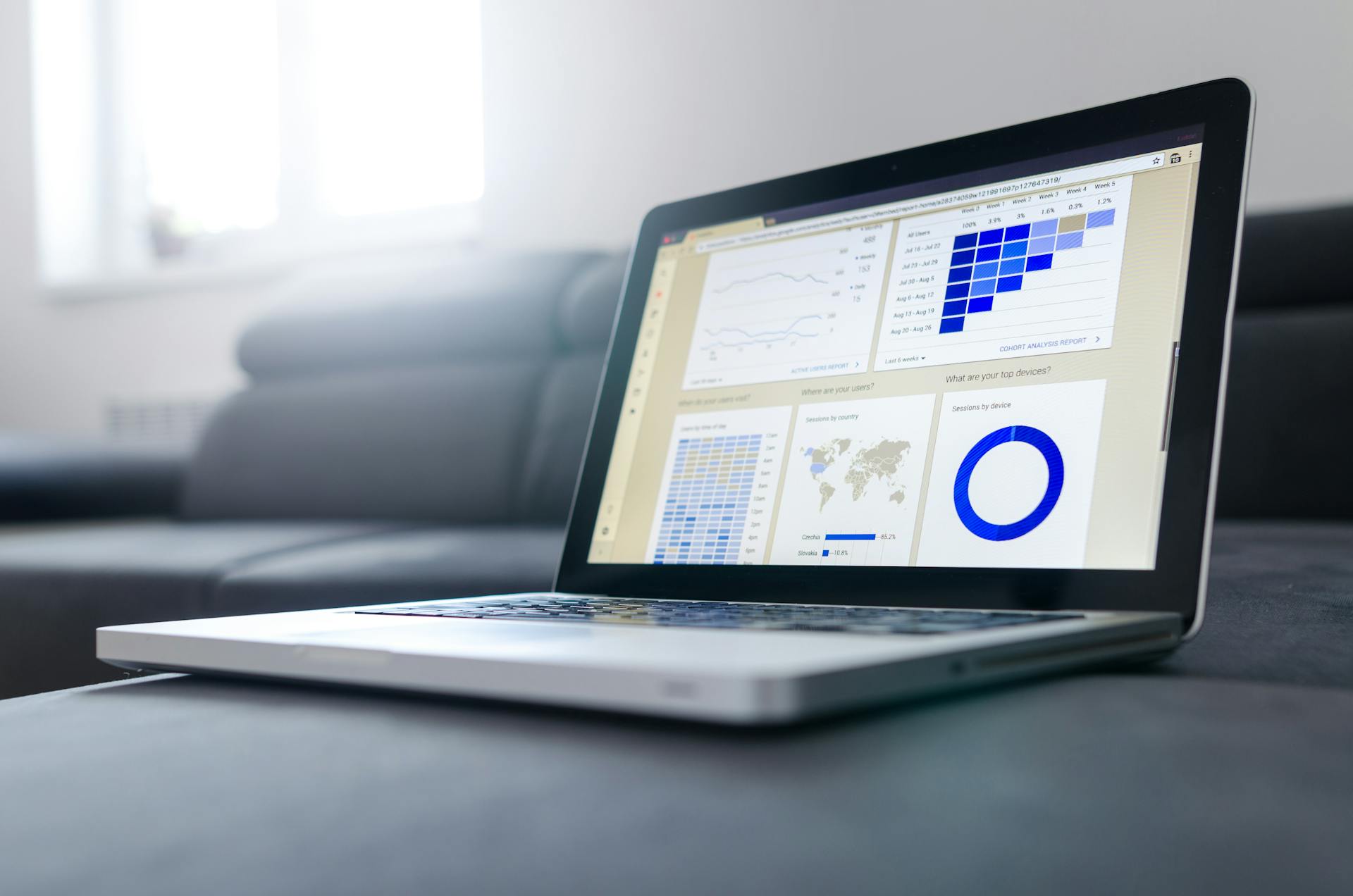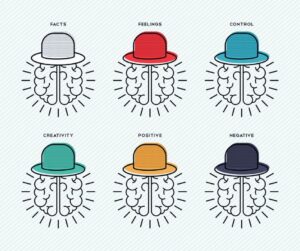We all have to make decisions every day – some small, some big. From deciding what to wear or what to eat for breakfast, to important choices about our careers, finances, relationships, and more. With so many options and so much information available, making the right decision can be challenging.
That’s why learning how to use data effectively is a crucial skill. Making data-driven decisions, rather than relying on intuition or ‘gut feelings’ alone, can remove some of the guesswork and lead to better outcomes.
Why use data for decision making?
Using data brings objectivity into your decision making process. Collecting and analyzing relevant data can uncover insights and patterns that may not be visible otherwise. Relying solely on intuition, past experiences, or ‘rules of thumb’ can lead to misleading or incomplete conclusions.
Here are some key reasons why using data can lead to better choices:
- Data reduces assumptions – It’s easy to make decisions based on beliefs we already hold, even unconsciously. Data helps minimize assumptions by grounding the decision in facts.
- Identify trends and patterns – Looking at data over time makes it possible to spot trends that would otherwise be hidden. These insights can be invaluable for strategic planning.
- Quantify outcomes – Data allows you to set specific, measurable goals and quantify the potential impact of different options. This makes it easier to compare alternatives.
- Learn from experience – Tracking performance data provides feedback you can use to continually optimize decisions and processes going forward.
Of course, data should complement rather than replace human expertise and judgment. However, combining data with personal knowledge and experience is a powerful approach for making the best possible decisions.
What types of data should I use?
There are two main categories of data to draw from when making decisions:
Quantitative data – Numerical or measurable types of data. Examples include:
- Sales figures
- Website traffic and conversions
- Customer satisfaction scores
- Process efficiency metrics
- Financial statements
Qualitative data – Subjective or descriptive data that provides context. For example:
- Customer opinions and feedback
- Market and competitor research
- Focus group discussions
- Stakeholder interviews
- Ethnographic research
Using both quantitative and qualitative sources gives you a complete picture. The numbers tell you what is happening, while the descriptive data offers insights into why and how to respond.
Ideally, you should gather quantitative and qualitative data covering these different dimensions:
- Past – Historical performance to identify trends
- Present – Current situation analysis
- Future – Forecasts, projections, and predictive data modeling
This provides a time-series perspective so you can understand where things have come from, where they’re heading and how decisions you make now may play out.
Analyzing and interpreting the data
Simply collecting lots of data is not useful unless you can analyze it effectively to inform better choices.
Here is a step-by-step process for transforming raw data into actionable insights:
1. Set clear goals – Be specific about the decisions you need to make and metrics for success. This focuses your analysis to get meaningful answers.
2. Clean and process – Fix any errors, remove anomalies, handle missing values, and get your data ready for analysis. Bad data leads to bad insights.
3. Explore the data – Use descriptive statistics and data visualizations to look for patterns and build your understanding. Let the data speak.
4. Draw conclusions – Summarize key findings and consider the impacts on your decision-making. But don’t assume causation without further analysis.
5. Share informed perspectives – Communicate insights with other stakeholders to build consensus. Data-driven discussion leads to alignment.
6. Monitor outcomes – Keep tracking against your key metrics to ensure the decisions have the intended impact. Be ready to course correct if needed.
Overcoming cognitive biases
While data should provide objective insights, human psychology can get in the way of making the best data-driven decisions. Watch out for these common bias traps:
Confirmation bias – Seeing only the data that confirms pre-existing beliefs while ignoring anything contradictory. Actively look for disconfirming evidence.
Anchoring bias – Relying too heavily on the first data seen or an initial assumption. Consider the data freely without locking in early.
Availability bias – Giving more weight to recent events or readily available data points that may not represent long-term trends. Take time to gather all relevant historical data.
Correlation vs causation – Just because two data sets are correlated, it does not mean one necessarily causes the other. Analyze the underlying causal mechanisms behind any correlations.
Being aware of the role cognitive biases play is the first step. Approach data analytics and business intelligence with an open and exploratory mindset to counter these natural human tendencies.
Trusting the data
Making decisions based on data requires having confidence that the data itself is accurate and relevant. Here are some best practices:
Ensure quality data collection – Invest upfront in training, process improvements, and quality assurance checks to promote consistency. Document any limitations.
Normalization – Carefully process data to account for variables such as seasonality trends so the numbers can be compared meaningfully over time.
Contextualize insights – Data analytics can surface intriguing patterns but the reasons behind them still require human judgement and qualitative assessment.
Triangulate with multiple data sources – Look for confirmation across different data types and analytical approaches. Seek expert peer review of analysis and conclusions.
Iterate based on outcomes – Adopting data-based decisions is a learning process. Review successes and failures to continuously improve over time as the data set grows.
With the right caution and diligence, data can provide trustworthy guidance. But always be ready to verify the insights with further exploration using different analytical lenses.
Conclusion
Learning to harness data effectively removes assumptions, emotions, and guesswork from important decisions. While making sense of ever-growing data sources can seem overwhelming, following a structured analytics process helps extract reliable insights you can have confidence in.
Combining this with an awareness of the human biases that can undermine objectivity, plus ongoing iteration as outcomes provide more evidence, leads to consistently better choices guided by facts rather than opinions or intuition alone.
Data-driven decision making is a must-have skill for any individual or organization looking to improve performance, minimize risk, and operate more intelligently. But remember that data and algorithms should enhance human thinking, not replace it. By using data the right way, you gain an invaluable advantage but judgment and ethics must still prevail.
Q&A
Q – Isn’t data analytics expensive and requires specialist expertise?
A – The costs have dropped dramatically while user-friendly analytics tools open up powerful capabilities to more business users without requiring advanced statistical skills. But some level of literacy is still important – understanding metrics, visualization, and basic statistical concepts allows you to have informed conversations with technical specialists and ask the right questions to drive value.
Q – What if I still have ‘gut-feel’ hunches that seem to contradict the data?
A – The first step is being transparent about those instinctive reactions or preconceptions, to avoid having them undermine objectivity unconsciously. Record your hunches as testable hypotheses. Then use data to test them rigorously. Be prepared to be proven wrong but also open to finding useful patterns that go against conventional thinking.
Q – Isn’t too much data paralysis by analysis? Don’t we still need to move fast and learn by doing?
A – This is certainly true in areas of innovation and experimentation where data is sparse so decisions must be more speculative by nature. However scaling up successfully relies heavily on good data to optimize systematically. Find the right balance for your context, while also tracking assumptions and predicted outcomes at the front end even in uncertain environments.
TL;DR
Using data improves decision-making by minimizing assumptions and biases.
Combine quantitative performance data and qualitative insights from multiple lenses and periods to build a complete picture.
Following a structured analytics process allows data to guide choices while tempering it with human judgment. This leads to better outcomes if you iterate based on measured evidence.





